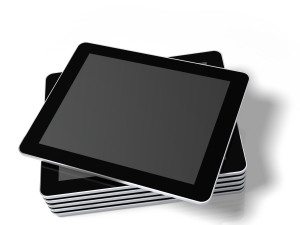
The birth of Apple's iPad, in 2010, started one of the tech world's most successful markets, with new rivals emerging on the scene literally every month.
In April alone, Samsung and Panasonic are expected to release two new tablets in the South African market. All big manufacturers are also expected to release upgrades to their existing devices this year.
According to the International Data Corporation's latest Smart Connected Device Tracker report, the shipment of tablets worldwide increased by 78.4% year-on-year in 2012. The tablet market is expected to reach 190 million units in 2013, with a year-on-year growth of 48.7%.
This begs the question of whether there is room in the market for more tablets. World Wide Worx MD Arthur Goldstuck says it will be years before the South African tablet market is fully saturated. "There will always be the need to update or upgrade."
Fuseware CEO Mike Wronski says even though the market is starting to fill up, there is room for growth. "There were 8.2 million broadband subscriptions in SA at the end of 2012, with total Internet usage already well over 10 million. Couple this with consumers demanding a connected always-on experience, the total sales of tablets is likely to rise."
He says there are a few factors that have influenced the exponential growth of the tablet market. "The commoditisation of the tablet market, alongside continually decreasing manufacturing costs, has led to very few barriers of entry into the market. This has resulted in every large electronics manufacturer, as well as dozens of niche players, entering the market with their own solutions."
Hard-working
In the space of one day, Microsoft's plans to develop a seven-inch Surface tablet were revealed, while Samsung confirmed its new line of phone-sized-tablets (or phablet), the Galaxy Mega range, which is expected in Europe next month.
Goldstuck says it's not a question of whether we have too many tablets on the market, but rather if there is a use for them. "Tablets help people to enhance their work, it assists with education and it generally makes you more versatile."
The size of the PC market currently stands at around 10 million, he notes. "These are all prospective tablet users, and the potential for tablets is much greater than that of the PC."
Spoilt for choice?
Although Apple is still ahead of the tablet pack in terms of market share, consumers are looking towards other alternatives. According to the IDC, Apple's market share declined for a second time during last year's fourth quarter, from 46.4% to 43.6%. Meanwhile, Samsung experienced a 263% year-on-year growth, shipping almost eight million combined Android and Windows 8 tablets, to secure a 15.1% market share.
Back home, Goldstuck says the picture doesn't look any different. By the end of September last year, Apple was still the largest player in the tablet market, holding onto 50% of the share, followed by Samsung with 33%. Huawei came in at a distant third, with 7.5%. The rest of the market makes up 10% of the tablet share.
Wronski adds that we can expect to see fierce competition as the costs of entry into the market decrease. "However, the top three manufacturers will probably keep the lion's share. They offer consumers a consistent and reliable brand experience that conveys marks of quality, which lesser-known tablet brands do not have."
Changes ahead
With the increasing demand and popularity for tablets, manufacturers have had to produce offerings to suit not only the needs but also the pockets of all consumers. Goldstuck says cheap tablets will vanish with the rise of quality tablets at entry-level costs. "Acer has already succeeded in this regard with its B1, which is available in the sub-R2 000 price range."
Wronski predicts further segmentation before the market starts consolidating. "More vendors will come on board, and even existing vendors will come out with new models in different sizes and styles. There will be tablets available for practically every niche use. I believe the market will then consolidate on the brands and tablet sizes that provide the most overall end-user value."
One of the biggest drivers for the tablet market, according to Goldstuck, is educational use. "Apple has various iPad programmes at government schools, but more and more schools have been embracing Android as a more affordable option."
Share